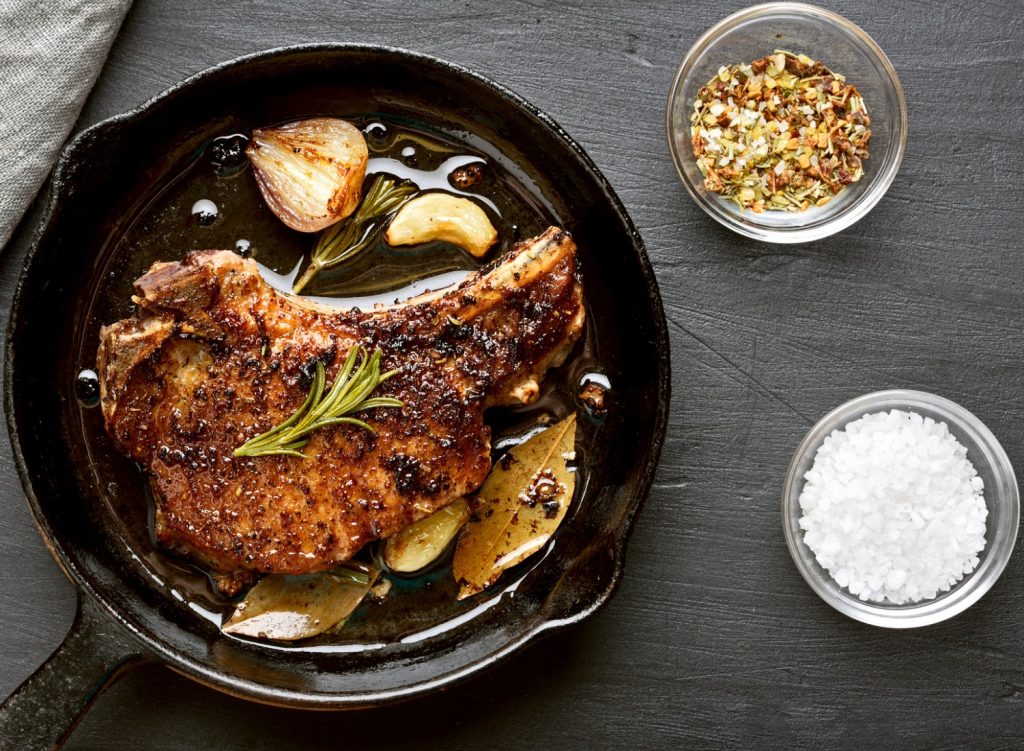Reverse Sear Steak: The Newest Cooking Craze You Need To Know About

In the ever-evolving world of culinary trends, there’s always a new technique or approach that captures the imagination of food enthusiasts. One such method that has been making waves in recent years is the reverse sear for cooking steaks. If you’re a beef connoisseur or a culinary adventurer searching for the next gastronomic thrill, this is the craze you absolutely must explore.
The reverse sear technique upends the traditional way of cooking steaks by slow-cooking the meat at a low temperature before giving it a final searing flourish. The result is a steak that’s the epitome of perfection—an exquisitely tender and evenly cooked interior paired with a mouthwatering, caramelized crust. In this blog, we’ll take you on a journey through the world of reverse sear steak, revealing the secrets, the science, and the sensational taste that awaits.
What Is the Reverse Sear Method?
Traditionally, when cooking a steak, you might sear it first in a hot pan or on a grill and then finish it in the oven. This method is tried and true, resulting in a beautiful sear on the outside and a juicy interior. However, the reverse sear flips this process on its head. Instead of searing first, you start by slow-cooking the steak at a lower temperature, then finish it with a sear. The results are nothing short of spectacular.
The key to the reverse sear method is precision. You’ll want to use a meat thermometer to monitor the internal temperature of the steak. To start, preheat your oven to a low temperature, typically around 275°F (135°C). Season your steak with salt and pepper, or your favorite steak rub, and place it on a wire rack over a baking sheet. This allows for even cooking and air circulation.
Slow and Steady Wins the Steak Race
The magic of the reverse sear lies in the slow and steady cooking process. By cooking the steak at a lower temperature, you give it time to evenly distribute heat and reach the desired internal temperature. This slow approach ensures that the entire steak is cooked to perfection, with minimal risk of overcooking or undercooking.
A general guideline for reaching your preferred level of doneness is as follows:
- Rare: 120-125°F (49-52°C)
- Medium Rare: 130-135°F (54-57°C)
- Medium: 140-145°F (60-63°C)
- Medium Well: 150-155°F (66-68°C)
- Well Done: 160°F (71°C) and above
The time it takes to reach these temperatures can vary based on the thickness of your steak, so using a smart meat thermometer is crucial. Keep a close eye on it to ensure you don’t overcook your steak.
The Searing Finale
Once your steak reaches a few degrees below your desired internal temperature, it’s time for the searing finale. The sear gives the steak that crave-worthy crust and locks in all the delicious juices.
To sear your steak, heat a cast-iron skillet or grill to high heat—you want it smoking hot. Add a touch of oil to the skillet or grill grates and carefully place your steak on it. Sear for 1-2 minutes on each side or until a beautiful crust forms. Don’t forget to sear the edges as well if you’re feeling extra fancy.
Rest and Enjoy
After the searing is complete, it’s important to let your steak rest for a few minutes. This allows the juices to redistribute and ensures a juicy and flavorful bite every time. Cover the steak loosely with foil and let it rest for about 5-10 minutes.
While your steak is resting, take this time to prepare any side dishes or sauces you like. A simple herb butter or a red wine reduction can elevate your reverse sear steak even further.
Why Reverse Sear?
The reverse sear method has gained popularity for several reasons:
- Even cooking: The slow, low-temperature cooking method ensures that your steak is evenly cooked from edge to edge.
- Custom doneness: It’s easier to achieve your preferred level of doneness, as you have better control over the cooking process.
- Beautiful sear: The high-heat sear at the end creates a perfect crust, which enhances the overall flavor and appearance of the steak.
- Versatility: The reverse sear method works well with various cuts of steak, making it accessible to a wide range of budgets and preferences.
- Consistency: With practice, you can achieve consistent, restaurant-quality results every time you cook a steak.
Incorporating the reverse sear method into your culinary repertoire is a game-changer for steak lovers. It takes a bit of practice to get the timing and temperatures just right, but the results are well worth the effort.
Conclusion
So, whether you’re planning a special dinner for two or hosting a barbecue for friends and family, the reverse sear method is the newest cooking craze that will make your steaks stand out. The combination of a perfectly cooked interior and a mouthwatering sear on the outside will leave your taste buds singing with delight. Try it out, and you’ll never look at steak the same way again!